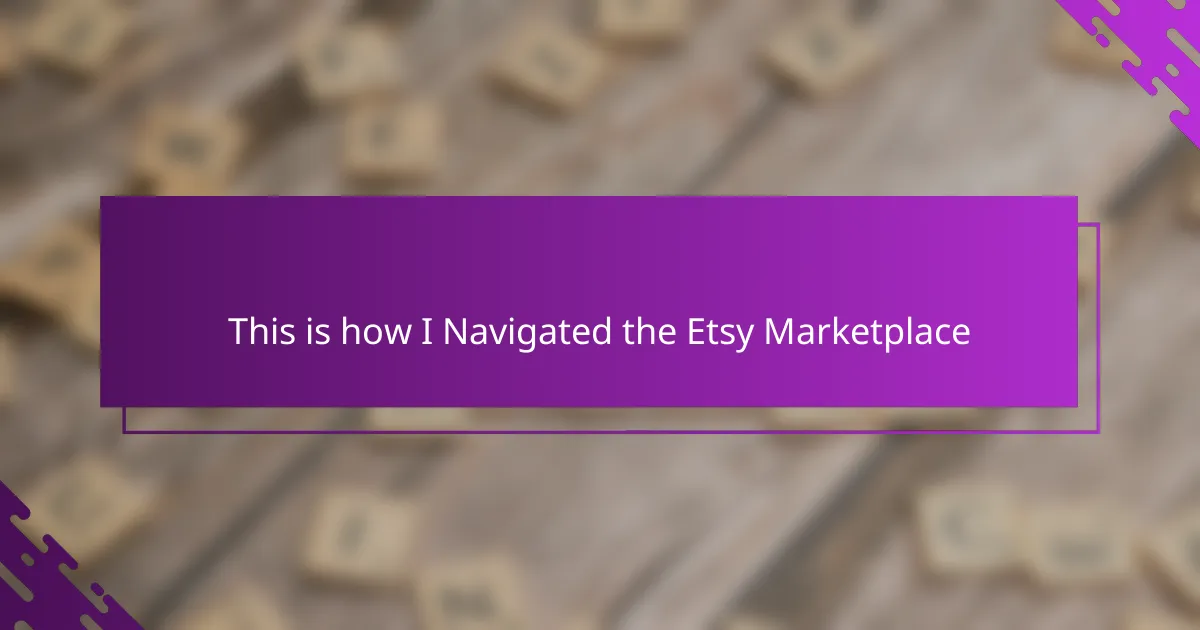Key takeaways
- Etsy emphasizes creativity and authenticity, requiring sellers to focus on clear descriptions and quality photos for better visibility and trust.
- Choosing niche products and balancing trend awareness with personal passion leads to more successful and sustainable sales.
- Effective customer service and organization in order management enhance customer satisfaction and can turn first-time buyers into repeat customers.
- Patience and persistence are essential; gradual improvements can lead to significant growth and maintaining authenticity fosters customer loyalty.
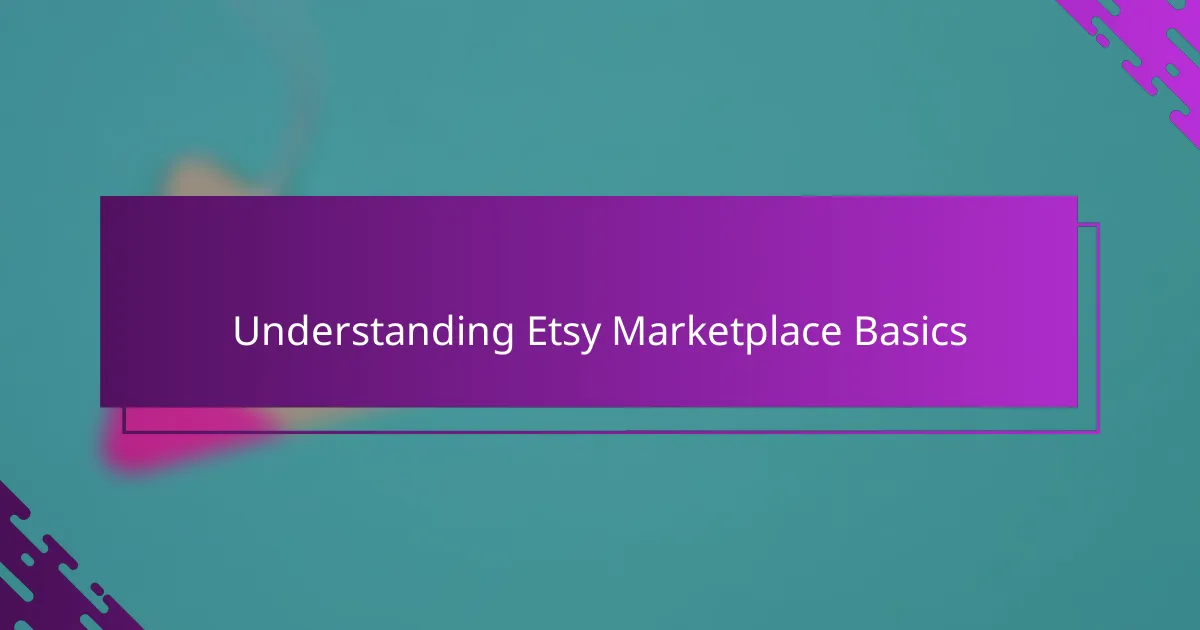
Understanding Etsy Marketplace Basics
When I first stepped into the Etsy marketplace, I quickly realized it operates much like a bustling digital craft fair. Sellers, including myself, set up virtual shops where handmade, vintage, or unique factory-manufactured items find their audience. Understanding this basic framework was crucial—it shaped how I approached my listings and interacted with buyers.
One thing I found fascinating is how Etsy prioritizes creativity and authenticity over mass production, which instantly set it apart from other marketplaces. Have you ever wondered what makes a shop truly stand out here? For me, it was learning that clear product descriptions and beautiful, honest photos were the heartbeat of gaining visibility and trust.
Navigating Etsy also means grasping its fee structure and search algorithm, which can feel like decoding a secret language at first. From my experience, knowing how listing fees, transaction fees, and advertising costs interplay helped me avoid surprises and plan my budget better. It’s a learning curve that, once mastered, makes selling smoother and more rewarding.
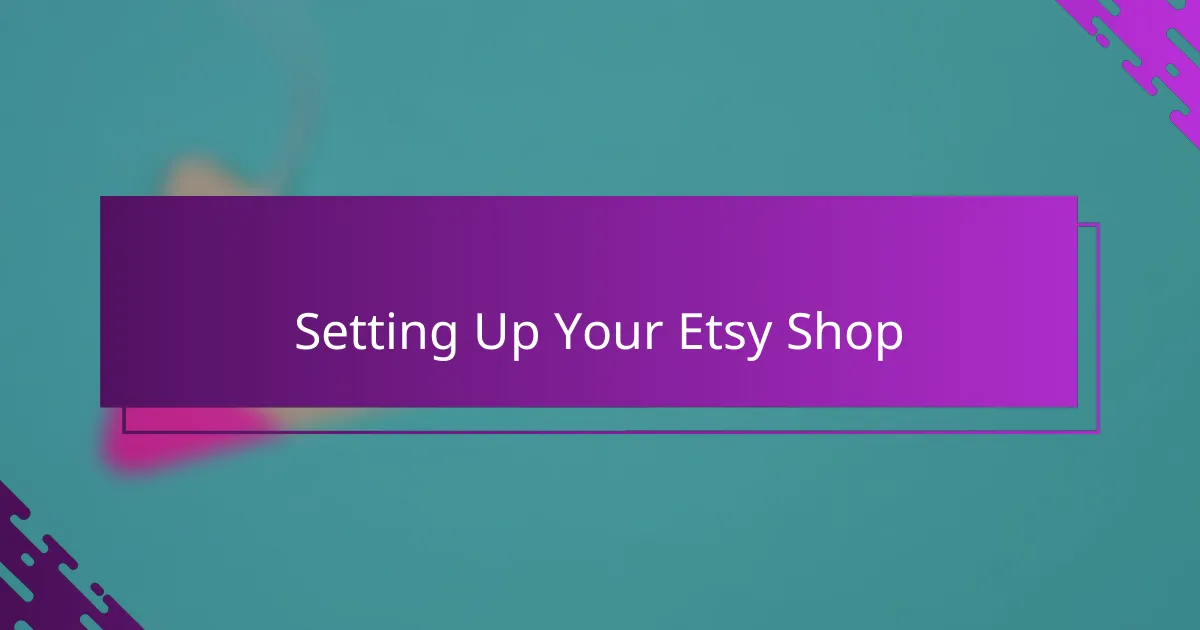
Setting Up Your Etsy Shop
Setting up my Etsy shop felt like opening the door to a whole new world. I remember staring at the empty template, wondering how to showcase my products in a way that felt both authentic and captivating. Choosing a shop name was surprisingly personal—it had to reflect my style and be easy enough for customers to remember.
One of the first challenges I faced was creating listings that told a story. Have you ever tried to balance being detailed without overwhelming buyers? I found that clear, heartfelt descriptions paired with crisp photos made a huge difference in drawing people in. It wasn’t just about selling an item; it was about sharing a piece of my creative journey.
Then came setting up payment and shipping details, which honestly felt a bit technical at first. I had to learn about options like PayPal, direct checkout, and figuring out shipping costs that wouldn’t scare off customers. But once I got that right, it was like laying a solid foundation—everything else felt easier to manage moving forward.
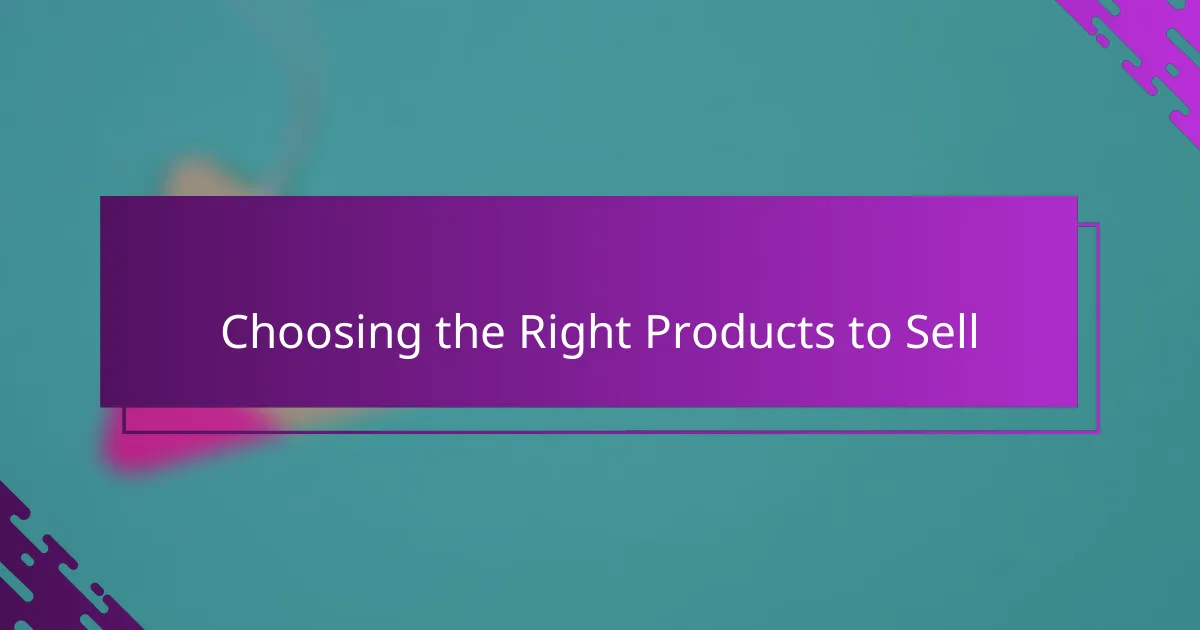
Choosing the Right Products to Sell
Choosing the right products to sell felt like both an exciting opportunity and a daunting puzzle. I asked myself, what am I passionate about creating that others would find meaningful? It wasn’t just about picking items that looked good but finding that sweet spot where my creativity met real demand.
I learned quickly that niche products often performed better than broad categories. For example, instead of selling generic jewelry, I focused on personalized pieces that told a story—something buyers could connect with on a deeper level. Have you noticed how a unique touch can transform a product from ordinary to unforgettable? That connection became my secret weapon.
Another thing I realized was the importance of researching trends without losing my authentic voice. It’s tempting to chase what’s popular, but I found that blending trend awareness with what genuinely excited me led to much more satisfying and sustainable sales. After all, my enthusiasm showed in every listing, and buyers could tell when I truly believed in what I was selling.
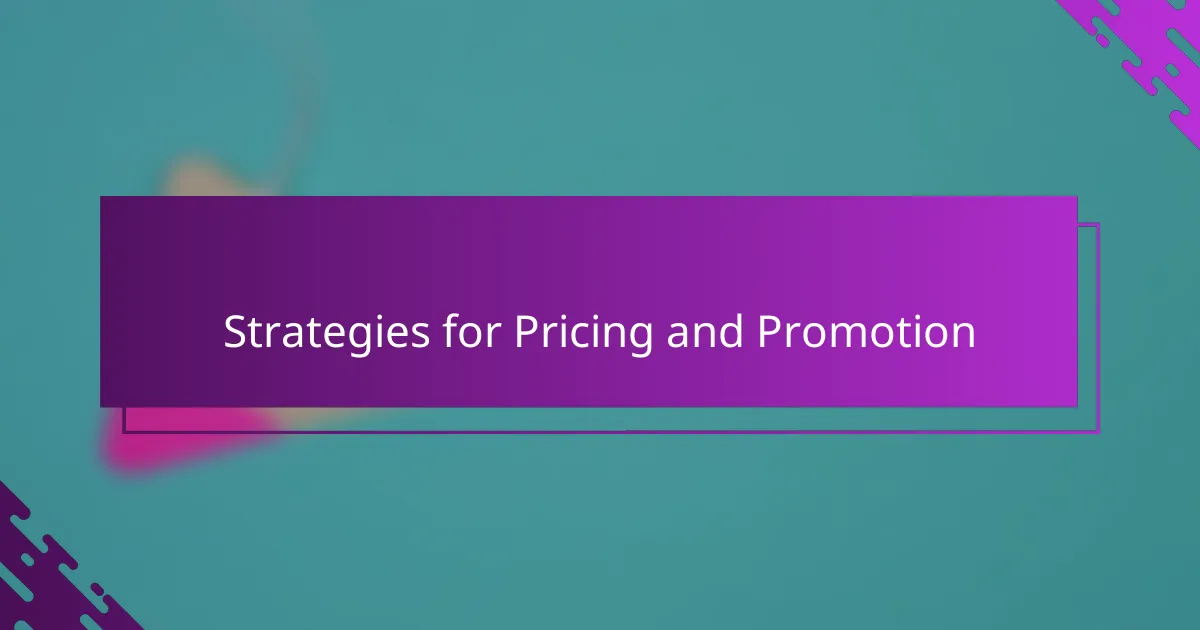
Strategies for Pricing and Promotion
Pricing on Etsy felt like walking a tightrope at first. I asked myself, how do I set a price that reflects the time and love I put into each creation without scaring off potential buyers? Through trial and error, I discovered that researching competitors and factoring in all costs—including materials and fees—gave me a clearer, more confident pricing strategy.
Promotion wasn’t just about shouting the loudest; it was about telling my story. I started using Etsy’s built-in advertising sparingly, learning when to boost a listing and when to rely on organic reach. Have you ever noticed how sharing behind-the-scenes photos or customer testimonials can create buzz that no paid ad can match? That authenticity became my best marketing tool.
I also experimented with occasional discounts and bundles, but only when they felt genuine rather than desperate. Offering limited-time deals sparked urgency without cheapening my brand. From my experience, balancing thoughtful pricing and heartfelt promotion made all the difference in turning browsers into loyal buyers.
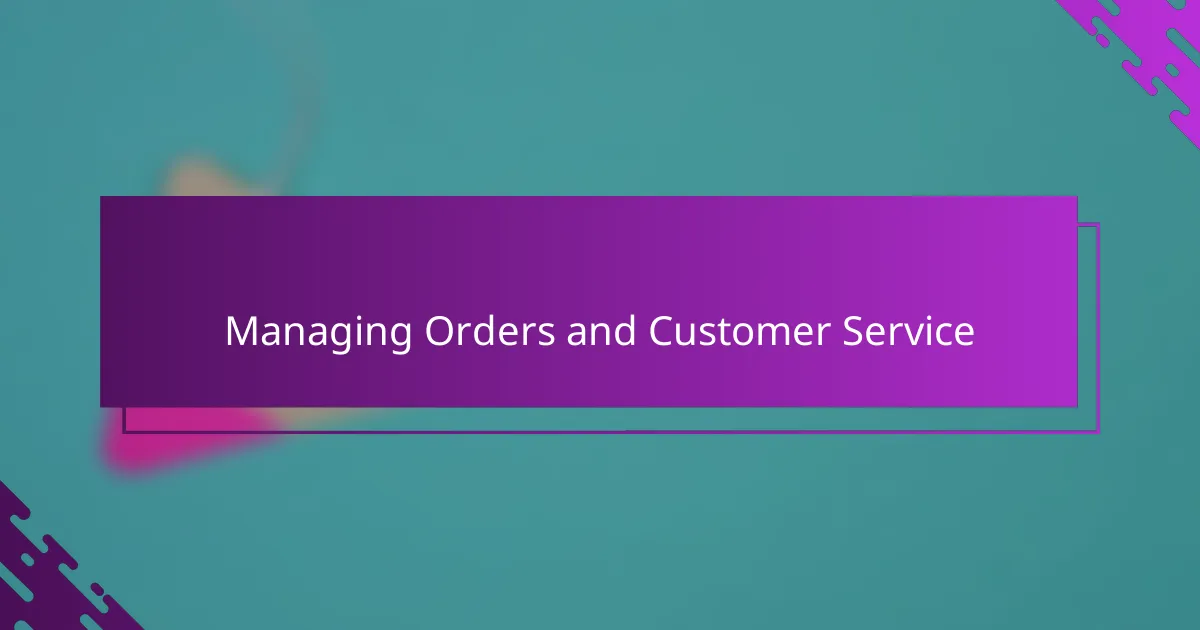
Managing Orders and Customer Service
Handling orders on Etsy taught me the importance of staying organized and responsive. I quickly realized that a smooth fulfillment process, from packing to shipping, made a big difference in customer satisfaction. Have you ever experienced the relief of sending out a well-prepared package and then receiving a heartfelt “thank you” from a buyer? That moment made all the effort worthwhile.
Customer service felt like the heart of maintaining my shop’s reputation. I learned to approach questions and issues with patience and empathy, even when the occasional hiccup happened. How do you stay calm when a package gets lost or a buyer is unhappy? For me, it was about honest communication and finding solutions that left both sides feeling respected.
One thing I didn’t expect was how quickly positive reviews could build momentum. Responding promptly and politely to messages, and sometimes including a little handwritten note in shipments, created a personal touch buyers appreciated. Over time, these small gestures transformed first-time buyers into repeat customers—and that, I believe, is where the real magic lives.

Overcoming Challenges in Etsy Selling
Overcoming challenges in Etsy selling often feels like tackling a series of unexpected puzzles. One challenge I faced was dealing with fluctuating Etsy search rankings; sometimes my best listings would suddenly drop in visibility. Have you ever felt baffled when your sales dip despite no apparent reason? I found that regularly refreshing keywords and experimenting with tags helped me regain traction.
Inventory management was another hurdle that tested my organization skills. Early on, I underestimated how quickly orders could pile up and how vital accurate stock tracking was. Missing items or delayed shipments led to stressful moments, but setting up simple spreadsheets and timely reminders became my lifesaver.
Then there’s the emotional rollercoaster of customer feedback. Negative reviews can sting, right? Instead of taking them personally, I learned to view criticism as a chance to improve. Responding kindly and proactively not only calmed upset buyers but sometimes turned criticism into praise. That mindset shift was crucial for my Etsy journey.

Lessons Learned and Future Plans
Looking back, one of the biggest lessons I learned was that patience and persistence truly pay off on Etsy. Have you ever felt tempted to give up when your shop’s growth seemed slow? I did, but sticking with small improvements—like tweaking tags or updating photos—gradually made a noticeable difference. It taught me to view growth as a marathon, not a sprint.
Looking ahead, I’m excited to experiment more with video content and social media integrations. From my experience, buyers love seeing products in action, and I want to build that deeper connection beyond static images. What new strategies could make your shop more engaging? For me, this feels like the next natural step to keep evolving.
Lastly, I plan to expand my product line carefully, keeping that balance between what sells and what excites me creatively. It’s tempting to chase trends aggressively, but I’ve realized authenticity is what keeps repeat customers coming back. How do you maintain that balance? For me, it’s about listening to both my intuition and my customers’ feedback, and letting both guide my future plans.
